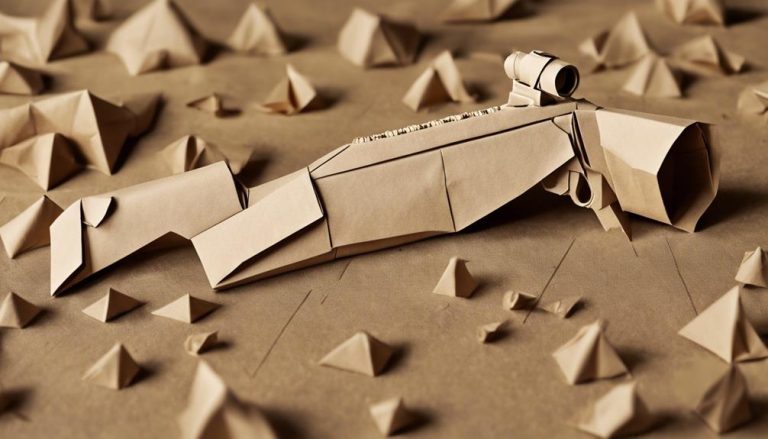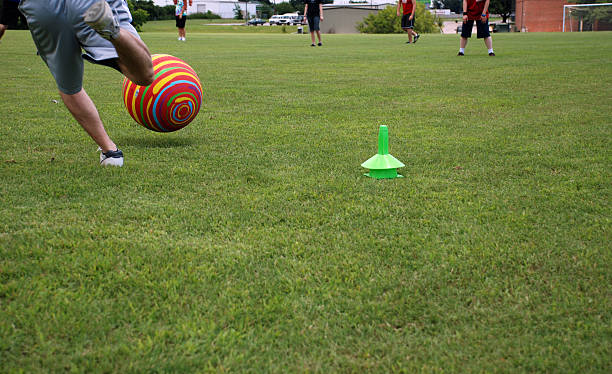General Rules of Mountain Unicycling
Are you ready to tackle the rugged trails and conquer the peaks on one wheel? Mountain unicycling presents a unique challenge that requires skill, focus, and preparation. From choosing the right gear to mastering advanced techniques, there's a lot to take into account when venturing into this extreme sport. Stay tuned to discover the essential rules and strategies that will elevate your mountain unicycling experience to new heights.
Choosing the Right Unicycle
When starting on the thrilling journey of mountain unicycling, pick a unicycle that fits your skill level and riding style perfectly. Unicycle sizing is important; make sure the one you choose matches your inseam length, riding preferences, and experience level. A unicycle that is too big or too small can greatly impact your performance and comfort on the trails. Take the time to research different unicycle sizes and their corresponding recommendations.
Brand comparison is another essential aspect to think about. Various unicycle brands offer different features, build qualities, and price points. Some brands may specialize in unicycles tailored for beginners, while others focus on high-performance models for experienced riders. Explore the options available in the market, read reviews, and seek recommendations from fellow mountain unicyclists. Ultimately, the brand you choose should align with your specific needs and goals as a rider.
When selecting a unicycle for mountain unicycling, prioritize durability, maneuverability, and comfort. Look for a unicycle that can withstand rough terrains, provide excellent control and responsiveness, and keep you comfortable during long rides. Remember, the right unicycle can make a significant difference in your mountain unicycling experience, allowing you to push boundaries, explore new trails, and embrace the freedom that comes with conquering nature on one wheel.
Safety Gear Essentials
To guarantee your protection and confidence on the rugged mountain trails, equipping yourself with the essential safety gear is paramount. When mountain unicycling, safety should always come first. Investing in the right gear not only protects you but also boosts your performance and comfort on the trails. Two of the most important safety gear items you should never ride without are a reliable helmet for head protection and sturdy knee pads for added safety.
Safety Gear Essentials:
| Safety Gear | Description | Importance Level |
|---|---|---|
| Helmet Protection | A well-fitted helmet is essential to protect your head from potential impacts in case of falls or collisions. Choose a helmet designed for mountain biking or extreme sports for maximum safety. | High |
| Knee Pads | Knee pads are important for shielding your knees from scrapes, cuts, and impact injuries. They provide an extra layer of protection and support, especially when tackling challenging terrains or attempting tricks and jumps. | High |
Equipping yourself with quality helmet protection and knee pads not only minimizes the risk of injuries but also gives you the confidence to push your limits and explore new trails without fear. Remember, safety gear is not just an accessory; it's your shield against the unpredictable nature of mountain unicycling. So, gear up, stay safe, and ride with freedom and confidence!
Mastering Balance and Control
Guarantee your mountain unicycling journey is marked by mastery as you hone your balance and control on the rugged trails. To truly excel in mountain unicycling, you must focus on mastering your balance and control through a combination of advanced moves, practice routines, equilibrium drills, and technique refinement.
Advanced moves are the key to handling challenging terrain with finesse. Once you have built a strong foundation of basic skills, it's time to level up by incorporating more complex techniques into your repertoire. Practice routines that include hopping, idling, and sharp turns will help you maneuver through obstacles like a pro.
Equilibrium drills are essential for honing your stability on uneven surfaces. One-legged riding, riding on narrow beams, and practicing riding at different speeds will enhance your ability to stay upright in unpredictable situations. Additionally, focusing on technique refinement will allow you to make smoother shifts, tackle steeper inclines, and handle descents with ease.
Terrain Selection and Preparation
Selecting the right terrain and preparing adequately are important steps for a successful mountain unicycling adventure. Trail exploration and route planning are crucial components of your pre-ride routine. Embrace the thrill of discovering new trails while making sure you have a clear understanding of the terrain's challenges. Before starting on your journey, take the time to study maps, seek advice from fellow riders, and familiarize yourself with the topography. Planning your route not only enhances the excitement but also guarantees a safe and enjoyable experience.
Consider the impact of weather conditions on your ride. Stay informed about the forecast and make necessary gear adjustments to suit the environment. Dress appropriately, pack essentials like water, snacks, and emergency supplies, and equip your unicycle with suitable tires and protective gear. Being well-prepared for changing weather patterns can make a significant difference in your overall performance and comfort during the ride.
Terrain selection sets the tone for your adventure, influencing the level of challenge and excitement you will encounter. By carefully evaluating the terrain, exploring different trails, and planning your route thoughtfully, you set yourself up for a freeing and fulfilling mountain unicycling experience. Prepare, adapt, and embrace the journey ahead with confidence and enthusiasm.
Uphill and Downhill Techniques
As you navigate the challenging mountain trails on your unicycle, mastering the uphill and downhill techniques becomes important for a successful ride. Uphill Posture Tips will help you conquer steep inclines with efficiency and control, while Downhill Speed Control techniques are vital for maintaining balance and avoiding accidents. Learning Terrain Adaptation Techniques is key to adjusting your riding style to different landscapes and ensuring a smooth and enjoyable journey.
Uphill Posture Tips
When tackling uphill terrain on your mountain unicycle, maintaining a balanced posture is essential for conquering the incline with ease and efficiency. To enhance your uphill riding experience, consider the following tips:
- Engage your core muscles to stabilize your body
- Lean slightly forward to keep momentum
- Important pedal positioning is vital for power
- Use breathing techniques to stay relaxed and focused
- Keep your eyes focused on the path ahead
Downhill Speed Control
Conquering downhill terrain on your mountain unicycle demands precise control of your speed to navigate the descent safely and confidently. When hurtling down slopes, mastering braking techniques is crucial. Use your brake wisely, modulating it to prevent skidding. Speed management is key; keep your center of gravity low and slightly backward, controlling your momentum. Anticipate trail obstacles, adjusting your speed to tackle rocks, roots, and drops effectively. Employ descent strategies like the 'feathering' technique, lightly applying the brake in short bursts. Stay relaxed yet focused, allowing your unicycle to roll smoothly over the rugged terrain. By honing your downhill speed control skills, you'll flow effortlessly down the mountain, embracing the thrill of the ride.
Terrain Adaptation Techniques
To excel in mastering terrain adaptation techniques on your mountain unicycle, understanding both uphill and downhill techniques is essential for traversing varied landscapes with skill and confidence. When conquering challenging terrains, remember these key points:
- Handling obstacles: Approach obstacles with confidence, using your balance and momentum to maneuver through them smoothly.
- Maintaining balance: Focus on keeping your center of gravity aligned to maintain stability on uneven surfaces.
- Riding switchbacks: Master the art of traversing tight switchbacks by controlling your speed and making precise turns.
- Control is key: Learn to modulate your speed effectively, especially on steep descents, to maintain control and avoid accidents.
- Adapt and overcome: Embrace the challenges of the terrain, adjusting your technique as needed to conquer any obstacles in your path.
Maintenance and Care Tips
You've mastered the art of mountain unicycling, but there's more to it than just riding. To keep your unicycle in top shape, regular maintenance is key. Let's talk about cleaning your unicycle parts and checking tire pressure to guarantee smooth and safe rides.
Cleaning Unicycle Parts
When maintaining your mountain unicycle, ensuring the cleanliness of its parts is essential for peak performance and longevity. Here are some tips to keep your unicycle in top shape:
- Regularly wipe down the frame and components with a damp cloth to remove dirt and grime.
- Use a mild soap solution for stubborn dirt, but avoid getting water into the bearings.
- Inspect the chain for debris and lubricate it regularly to prevent rust and ensure smooth operation.
- Check brake pads for wear and replace them if necessary to maintain peak braking performance.
- **Store your unicycle in a dry place away from moisture to prevent rust and corrosion.
Checking Tire Pressure
Maintaining best tire pressure is important for ensuring a smooth and efficient mountain unicycling experience. Tire maintenance is essential for ideal performance. Invest in a quality pressure gauge to accurately measure the pressure in your tires. Proper inflation not only enhances your ride but also contributes to tire durability. Riding with incorrectly inflated tires can lead to poor handling, increased risk of flats, and reduced traction. Before hitting the trails, take a moment to check your tire pressure and make adjustments as needed. This simple task can greatly impact your overall riding experience. Embrace the empowerment of knowing your equipment inside and out, starting with the often-overlooked tire pressure.
Frequently Asked Questions
How Do I Train for Mountain Unicycling to Improve My Endurance and Strength?
To boost endurance and strength for mountain unicycling, focus on proper nutrition and hydration. Incorporate cross-training, like cycling or hiking, to build overall fitness. Allow time for recovery to prevent burnout and injuries. Stay committed!
Are There Any Specific Techniques for Riding on Particularly Rocky or Uneven Terrain?
When you tackle rocky trails on your unicycle, remember to focus on balance techniques and strategic foot placement. For uphill challenges, lean forward and pedal steadily; on downhill descents, shift your weight back and control your speed.
What Should I Do if I Encounter Wildlife While Mountain Unicycling?
When you spot wildlife while mountain unicycling, don't just panic! Embrace the moment with caution. Slow down, give them space, and admire their beauty. Remember, you're the guest in their home. Stay safe, respect nature.
How Can I Prevent My Unicycle From Getting Damaged When Riding in Wet or Muddy Conditions?
To prevent your unicycle from getting damaged in wet or muddy conditions, it's essential to clean and maintain it properly. Regularly clean off dirt and mud, lubricate moving parts, and protect vulnerable areas to keep your ride smooth and durable.
Are There Any Specific Hand Signals or Communication Methods Used Among Mountain Unicyclists While Riding in Groups?
When riding in groups, clear communication is key for safety and fun. Hand signals like pointing out obstacles or signaling stops are common. Establishing group etiquette beforehand guarantees a smooth and enjoyable mountain unicycling experience.






